
Shenzhen Road 230, Laoshan District, 266061 Qingdao China

Argentina

Egypt

Brazil

Poland

Russia

Peru

South Africa

Saudi Arabia

Sudan

Turkey

Ukraine

Iran

Italy

Indonesia

Jordan

Vietnam

Chile

Fuli
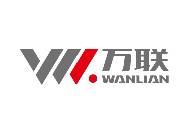
Wanlian
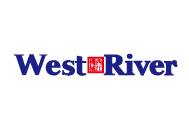
WestRiver
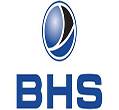
BHS
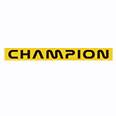
Champion
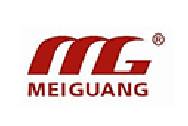
Meiguang
Kaituo Automatic Single-face
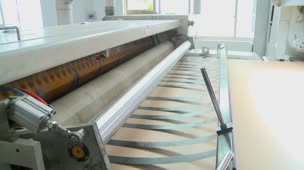
Kaituo Automatic Dry-end

Kaituo Automatic Dry-end

Kaituo Automatic Dry-end

Kaituo Automatic Dry-end

Kaituo Automatic Dry-end

Kaituo Automatic Dry-end

Kaituo Automatic Dry-end


Comparative analysis on the advantages and disadvantages of stacking forms
There are two systems in the stacker - upper stacking and lower stacking.The two systems can be mixed.The upper stacking type is formed by stacking on a fixed conveying device installed on the ground.The output conveyor belt is constantly raised so that the output cardboard is always above the stacked cardboard.When the stacking reaches the specified height, the transfer will be interrupted. The movable base plate conveyor will move the stacking to one side of the machine, and then the stacking transfer outlet position will be lowered to the conveyor belt device and the stacked cardboard will be unloaded. Then, as the cardboard starts to pile up again, the stacking conveyor will gradually increase.The lower stack also sends the cardboard to the top of the stacked cardboard, but the cardboard is output from a fixed conveyor to a raised/lowered conveyor station.When a stack of cardboard stacking is completed, the cardboard transfer will be interrupted, the transfer platform will be lowered to the horizontal position on the ground, the cardboard stack will be removed and the highest position under the transfer outlet will be returned.The conveyor then reloads the cardboard, and the conveyor decreases at an appropriate rate.It is obvious that the replacement cycle of the top stack is much shorter than that of the bottom stack.If the stack of all low-gram cardboard, the time difference is more obvious.In addition, the cardboard must be raised to 2 meters above the ground between the cross cutter and the lower stacking room.Due to the limitation of lifting angle, the lower stacking room must be far away from the cross cutter.The additional conveyor belt required can also provide buffer for cardboard stacking, thus providing sufficient time for the longer stacking replacement cycle at the lower stacking place.Therefore, the reasonable design of the double stacker should be equipped with the lower tool site for the use of the upper stack stacking and the upper tool site for the use of the lower stack stacking, because the conveyor must carry cardboard through the first stack, and the conveyor is longer.This design minimizes production line speed and can be installed on shorter machines.In terms of triple cutter and stacker, down-stack stacking is an ideal choice for the third work station.Continuous all batch orders can be completed by combining one or more additional stacking rooms and delivery units.Once the stacking replacement time exceeds the order running time, the conveyor can quickly move the cardboard from one room to another and back again.The finishing of cardboard stacking can be realized by the appropriate design of stacker or the rear equipment of conveying system.If it is done on a stacker, it is easy tothe connecting cardboard to increase stability.However, keep in mind that connecting cardboard can cause problems at the pre-feeding machine.In view of this, the stacker can be set up a all under heap stacking station, the height of the stack on the roller table is less than 400 mm.It is then transferred to the second roller table in parallel or connected (if the board is short), and then transferred to the descending roller table as a whole. Stacking is formed here.Whatever combination of stacks you use, you should pay attention to the first part of the conveyor belt after the cross cutter after order change. It is necessary to slow down the delivery speed of the cardboard of the new order and/or speed up the cardboard at the end of the last order, but the order should be clearly separated without damaging the cardboard, and the cardboard of the previous order will not be mixed into the new order cardboard.Theoretically, large bundling piles should not be formed.Stacking conveyor belt surface should have a high friction coefficient to prevent the board slip or skew.At the same time, there should be corresponding parts to output to the stacking process of cardboard control, such as the top roller, brush, etc.The output angle of the stacking conveyor belt and the distance between it and the stacking platform should be adjusted according to the length of the cardboard, so as to prevent the gas from entering the lower part of the cardboard due to the large angle (which may cause the cardboard to bounce from the rear baffle or cause deviation), or the damage of the long cardboard due to the steep angle.Such angle adjustment is very important in the upper stacker, otherwise the cardboard contact angle will change with the increase of stacking. Right-angle horizontal stackerIn addition, right-angle horizontal stacking can complete the horizontal discharge of cardboard, its performance is outstanding, economic and practical.But this stacking speed is very slow, and all by manual operation, suitable for low speed corrugated board production line.Please refer to table 1 for the analysis of advantages and disadvantages of down-stack stacker, up-stack stacker and right-angle horizontal digital stacker. Chart1:Comparative analysis on advantages and disadvantages of several stacking forms TypeAdvantages and DisadvantagesDown-StackerThe output cardboard is fixed in a position to stack the cardboard from the top to the bottom. After one order is completed and the pallet is transported, the second order is raised to receive the second order. The basket needs to go back and forth twice. The disadvantage is that it takes longer time to change the order compared; Advantages: Stable friction, stacking stability, stacking height without restrictions.Up-stackerThe output board is located on top of the stacked board, which is much faster than the bottom stacked stack.Cardboard from the bottom to the top of the stack, bridge conveyor frame from low to high movement, in an order after the completion of the delivery can be completed immediately.Rapid stacking, conducive to small order stacking.Disadvantages are due to the slope angle restrictions, the angle can not be too steep, the distance from the cross cutter position is far.In addition, the height of the stack is also limited, generally within 100 pieces.Right-Angle StackerAdvantages: the price of equipment is cheap, convenient manual packaging, suitable for low speed production line.Disadvantages: slow stacking speed, manual operation.
1282 views0 0

Factors to consider when purchasing cut-off
▲Cut-off Cut-off is also known as the final process cutting machine, it is composed of measuring roll, weight block, sun wheel, cutter shaft, the main is to continuously crosscut the slitting cardboard into a certain length of cardboard, and feeding the cardboard to the stacking conveyor belt for neat stacking. ▲Operation procedure of cut-offThe working principle of the cut-off: the cardboard after slitting is feeding to the crossing cut process, and the electronic eye of the paper wheel sends out a cardboard detection signal;Under the action of the rotation of the crosscutting knife and the sun wheel, the length of the crosscutting knife is cut according to the size set by the system.Under the pressure of paper shrapnel, the cross-cut finished products are decelerated and arranged on the conveyor belt.Under the rotation of the conveyor belt, the cardboard is output through the paper receiving department and feeding to the stacking process.The accuracy of crosscutting should be at least + / - 1 mm and square at right angles to machine speed changes and order change.The board is sent to the crosscutting knife site by either a traction roller or a clamped feed roller.The design of the traction roller or clamping rod has the self-adjusting , and the operator does not need to adjust the clearance according to the thickness of the board.They usually have a motor driven steel roller, the surface speed of the roller slightly higher than the speed of the cardboard, so as to maintain the tension of the cardboard.The upper roll is usually covered with a thick, soft, elastic covering, such as synthetic rubber, so that the board can be in close contact with the driving roll without collapsing.The main working element of a cut-off is to carry two axes of a tool that are very precisely interlocked with each other.These machines are designed with the operator in mind so that they can easily set up cutters and remove blockages caused by cardboard.The working principle of the cutter here is relatively complex.First, there should be a certain amount of pressure between the cutting knives during crosscutting. One knife should be close to the other to cut, so as to ensure that the crosscutting is clean and the cardboard will not get stuck between the cutting tools and force the blade to separate.The gear is mounted on both ends of the cutter drum in a 1:1 ratio.These gears generate torque between the tool rollers through torque, and this torque forces the two sides of the cutter together, preventing the cutter from separating.The principle is similar to that we use finger strength to operate scissors.Second, the cutter is not installed along the direction of the length of the cutter roller straight, but installed at a certain angle.This is done to prevent large amounts of repetitive vibration loads, noise, and wear, forming a gradual cut along the width - just like with scissors.But the board must be in the transverse accurate, square cutting.Third, the cutter will carry out circular motion, but the cutter and the cardboard cut-in the bite point, must be equal to the speed of the cardboard running along the direction of linear movement.Otherwise, if the cutter moves too fast, the cardboard will not be cut but torn, and when the traction roller will feed the cardboard into the back of the cutting tool running faster than the speed of the cutter tail, the front end of the cardboard will be deformed (bending or "arch" phenomenon).Fourth, in order to meet the requirements of different lengths of cardboard, the cutter must speed up immediately after cutting the short cardboard, or cut the next round of long cardboard after slowing down or even stopping for a period of time.It is most convenient to cut the cardboard which is closest to the circumference of the blade.Obviously, to meet the requirements of the above four points and to meet the expected cardboard length and cutting perpendicularity, good mechanical and electronic control is very necessary. The instructions provided by the supplier will guide the user to set up the gear torque angle and adjust the tool.The setting of the tool depends largely on the installation method of the tool on the tool roller and whether the tool has been adjusted to the cut-in or cutting state.The composition structure of the cut-off includes the main and secondary box body, upper and lower cutter shaft tranission part, paper feeding mechani, paper output mechani, length measuring mechani, lubrication system, pneumatic system, electronic control system, etc.The s of the cut-off need to meet the following requirements:● Crosscutting accuracy (1 mm error control and board squareness control).● Automatic adjustment of the thickness of the traction roller and clamping rod.● The shortest cutting length of the cardboard speed, mainly to investigate the ability to speed up the cut-off.● Match the production speed.● Minimize energy consumption.When purchasing cut-off, the following aspects need to consider:1. Position of Measuring meters wheel;2. Debugging of crosscutting line speed;3. Configuration of double motors;4. Power recovery system;5. Marking and cutting;6. Low inertia cutter (carbon fiber plastic drum);7. Waste discharge ;8. Reverse sharpening ;9. Suction drive length of the paper delivery plate.--If there is copyright dispute, please contact us to delete.
1340 views0 0

How to make right choice in buying cutoff
The cut-off has two ways of cutting paper, straight knife crosscutting and spiral knife crosscutting .Straight knife cut-off relies on the depth of the groove, the width of the crosscutting knife to achieve the rotary cutting board, by the groove depth, the width of the crosscutting knife restrictions.The shearing angle of the straight knife cut-off is relatively all, and the strength is not good when shearing, suitable for medium and low speed production line.The cut-off of spiral cutter opens a spiral cutter groove on the cutter shaft, and the cut-off is installed on the cutter shaft to form a spiral cutter with large shear angle, ooth paper cutting and labor-saving. It is suitable for cutting high-strength triple wall corrugated board on the medium-high speed production line.The computer control type straight knife cut-off use and the maintenance cost is low, the straight knife thickness is big, the service life is long, and the price is lower. Computer controlled spiral cutter cut-off is a relatively new technology at present, its design adopts low moment of inertia cutter shaft, cutter shaft is all, relatively easy to control, less power, can achieve high-speed production requirements.For example, the speed of 300 meters/min of the new all inertia cut-off, each motor power is 22KW, two motors power is 44KW.A speed of 300 meters/min of the traditional cut-off, motor power is 75KW.According to the calculation of the daily operation of the cut-off for 16 hours, it can save :(75-44) KW * 16 hours =496 KWH of electricity, and the annual cost can be saved about $21,000.The comparison of advantages and disadvantages of spiral low-inertia cutter and spiral ordinary cutter are as follows:Table3:The comparison of advantages and disadvantages of spiral low-inertia cutter and spiral ordinary cutter Spiral low inertia cutter--If there is copyright dispute, please contact us to delete.
1250 views0 0

Analysis on cutoff motor driver
The cut-off control mainly includes frequency conversion control mode, DC servo control mode and AC servo control mode.The digital AC servo control system composed of AC servo motor, AC servo controller and encoder is an ideal cut-off controlmethod.Through the optimization and matching of the cutter shaft inertia, mechanical speed ratio and servo motor rated power, rated speed and rotary inertia of the cut-off, high-speed, high-precision, high-efficiency, energy-saving, reliable and stable cut-off control can be realized.Single servo motor drive cut-off Double(two-side) servo motors drive cut-offA cut-off with only one motor is cheaper. However, when encountering short cardboard, due to the rotation speed is too fast, brake current is too large, resulting in the speed cannot exceed 300 meters/min.While the cut-off equipped with double motors can provide strong enough instantaneous current and power for short board production, so that the production can be carried out quickly, the speed can reach more than 300 meters/min.However, the disadvantages of the double motor cut-off are large power consumption, motor start instantaneous current impact is strong, need to be equipped with capacitance recovery device, so the price is more expensive than the single motor cut-off.Comparison of advantages and disadvantages of single motor cut-off and double motor cut-off, please refer to table 2 Table 2: Comparison of advantages and disadvantages of single motor cut-off and double motor cut-off--If there is copyright dispute, please contact us to delete.
1155 views0 0

Analysis on meter wheel
The meter wheel (a sensor that measures length, also known as a measuring wheel) collects information about the length of the board and the speed of the production line and tranits it to the cut-off. The cut-off itself cannot be more accurate than the information it obtains.The precise measurement of the cardboard movement into the cut-off is tranitted to the cutter, which determines the length of the cross-cutting board.The meter wheel equipped with a pulse generator is anchored in front of the crosscut cutter above the board, which is usually supported by a steel plate to prevent wear and tear.The surface of the meter wheel must be kept clean to ensure the accuracy of the cutter signal. During the clearance order change, the signal will be automatically transferred from the meter wheel to the encoder of the feed roller of the cut-off, so that the signal accuracy will be slightly reduced. ▲Single Measuring Meters Wheels ▲Double Measuring Meters Wheels Traditional single meter measuring wheel is generally installed about 30cm in front of the cut-off, that is, meter measuring wheel B is located in the front section of the cut-off and the back section of the slitter score.Its disadvantage is due to vibration, the cutting length error in 5mm, more than 10mm.(the error mainly depends on whether high-end servo motors and brakes are used.)Double meter wheel is to add another meter wheel at the position of meter wheel A.Because, we usually use measuring meters wheel A, this position has virtually no vibration, and at the time of order change, the cardboard is cut off, the meter wheel leaves the cardboard, knife shaft will not rotate, then need to start the measurement meters wheel B to measure the position, so to use two meters measuring wheels for length measurement, this will be very accurate.It has the advantage of mutual error correction mechani, which makes the equipment debugging and management more convenient, and eliminates vibration. The cutting length error can be controlled within plus or minus 1mm. Table 1 for comparison of advantages and disadvantages of single meter wheel and double meter wheel. Table1:Comparison of advantages and disadvantages of single meter wheel and double meter wheel--If there is copyright dispute, please contact us to delete.
1390 views0 0
